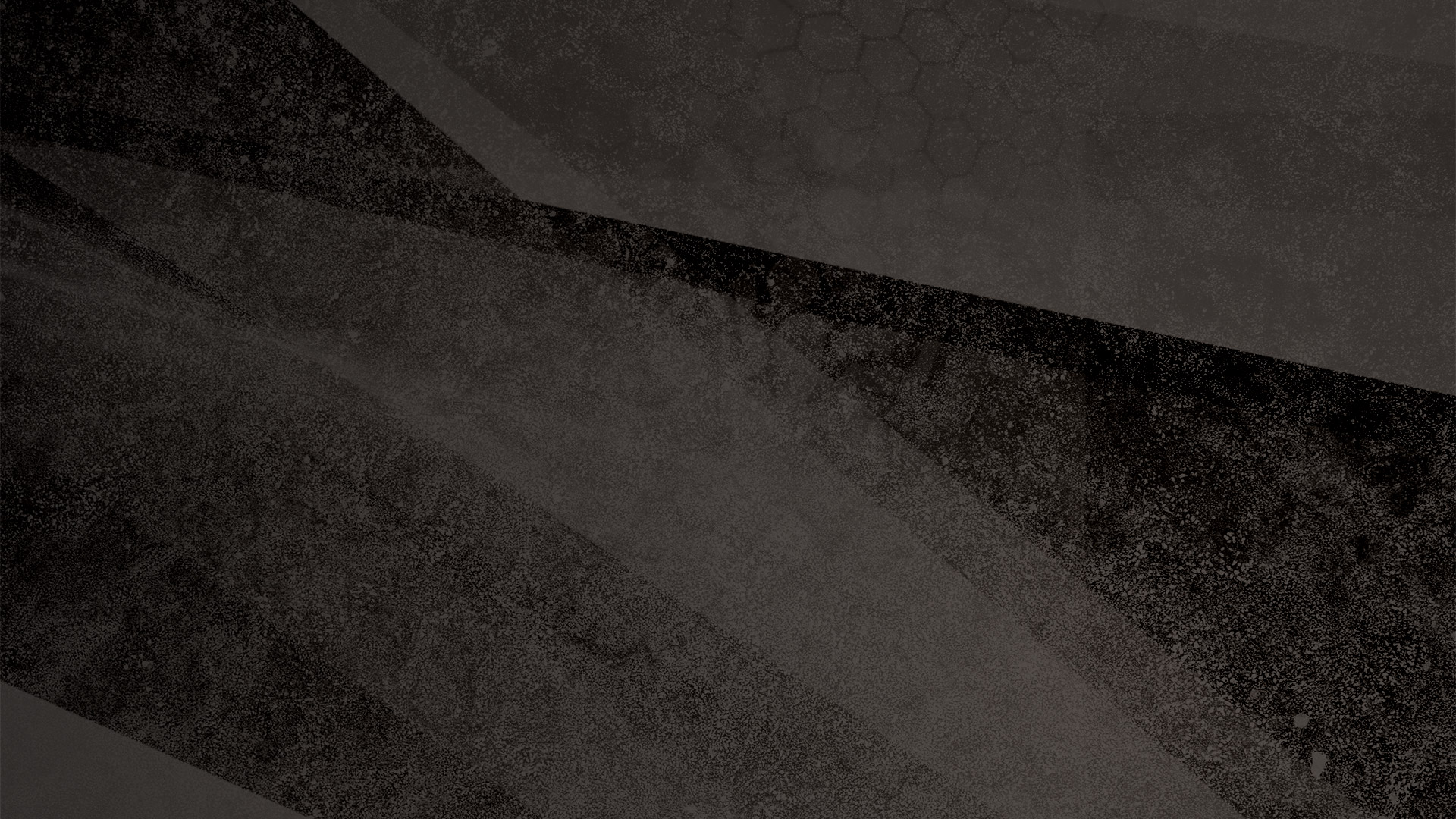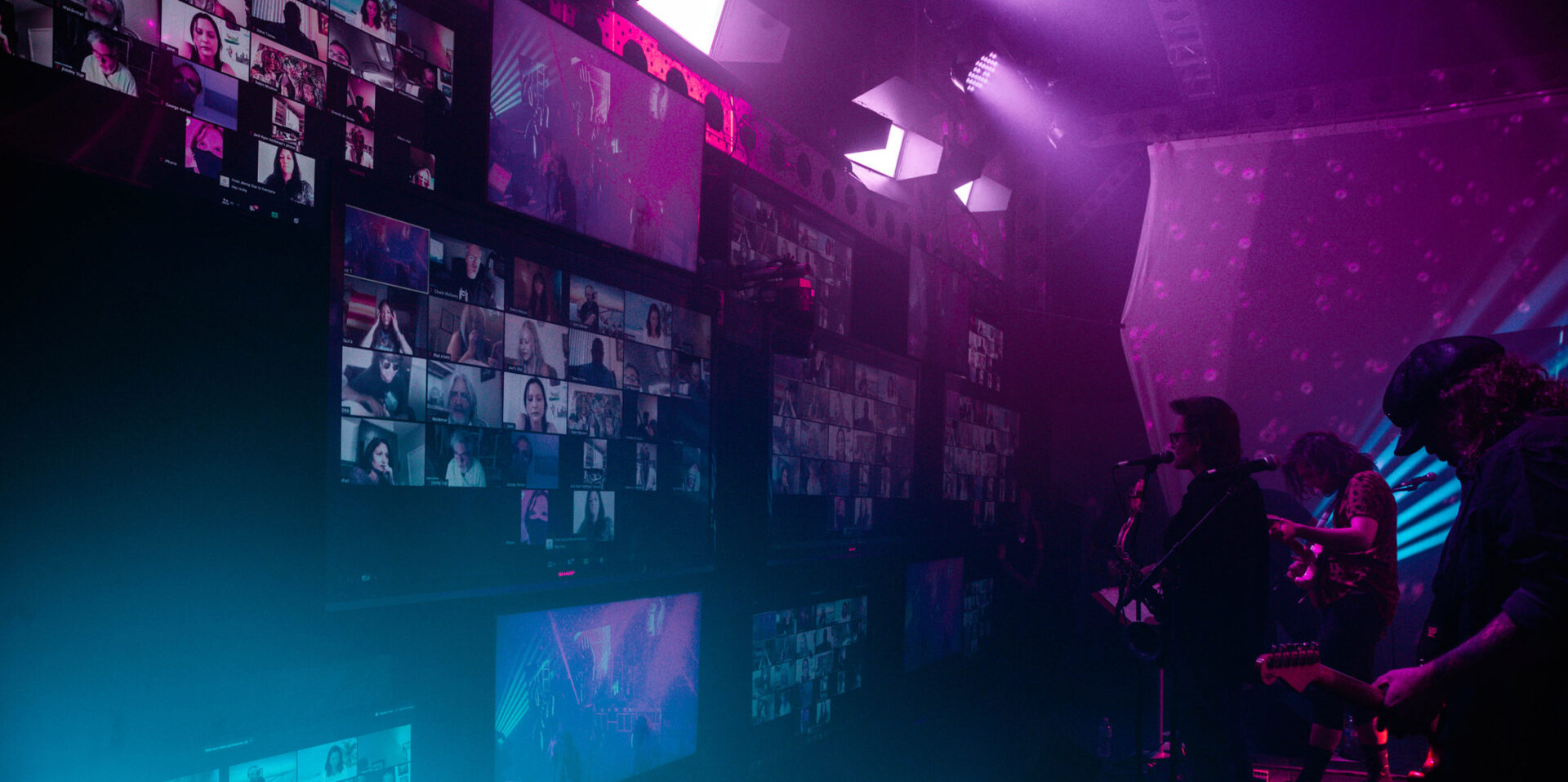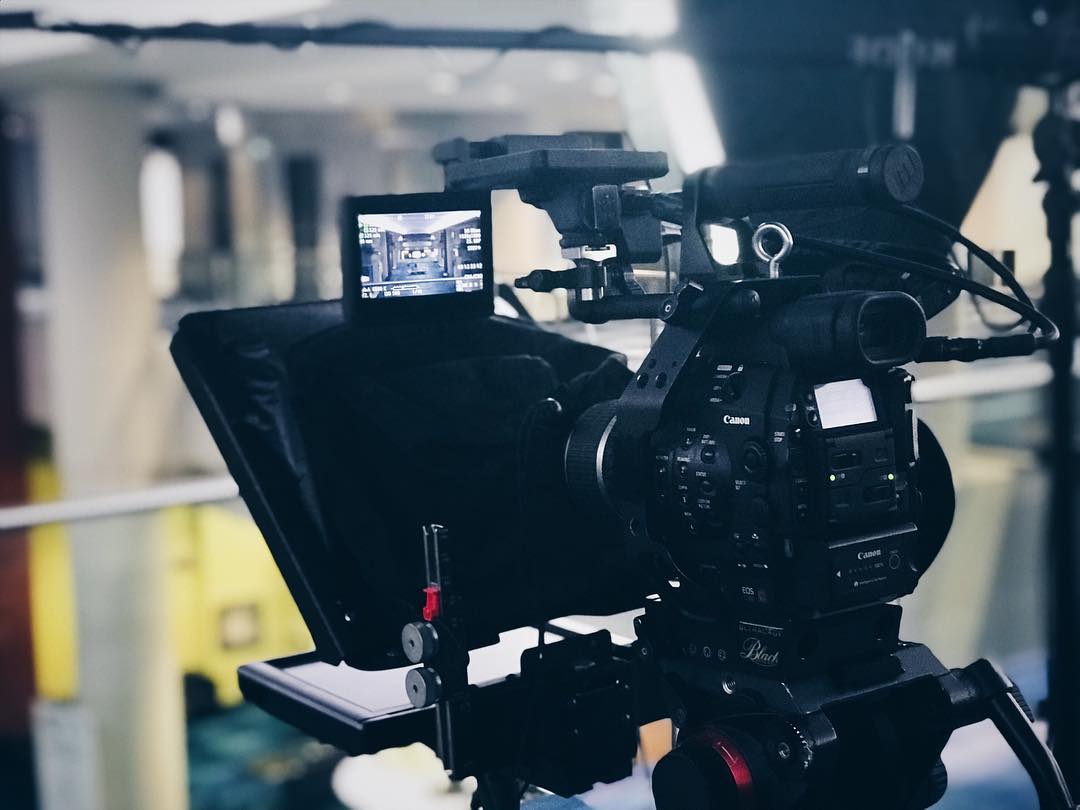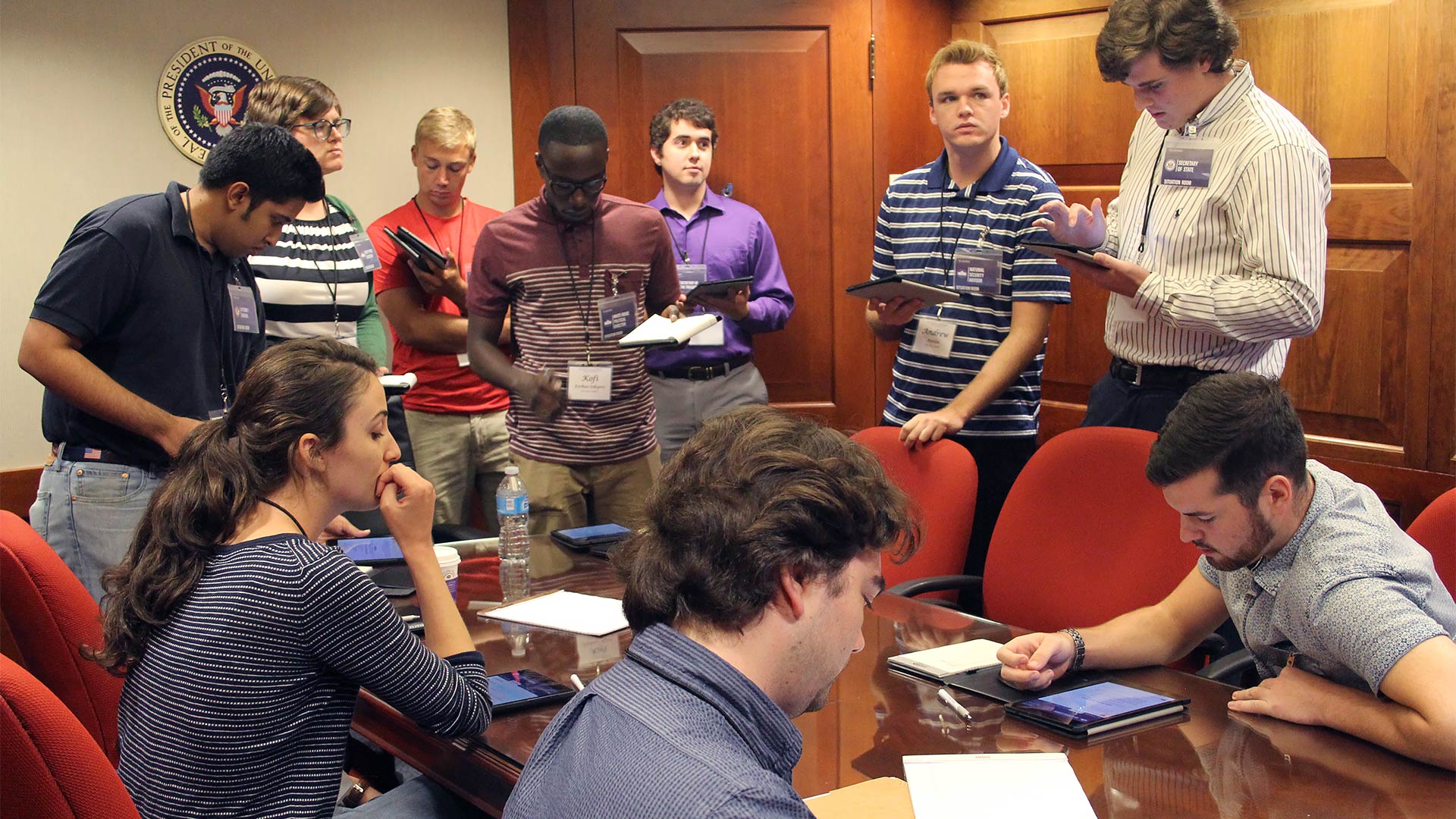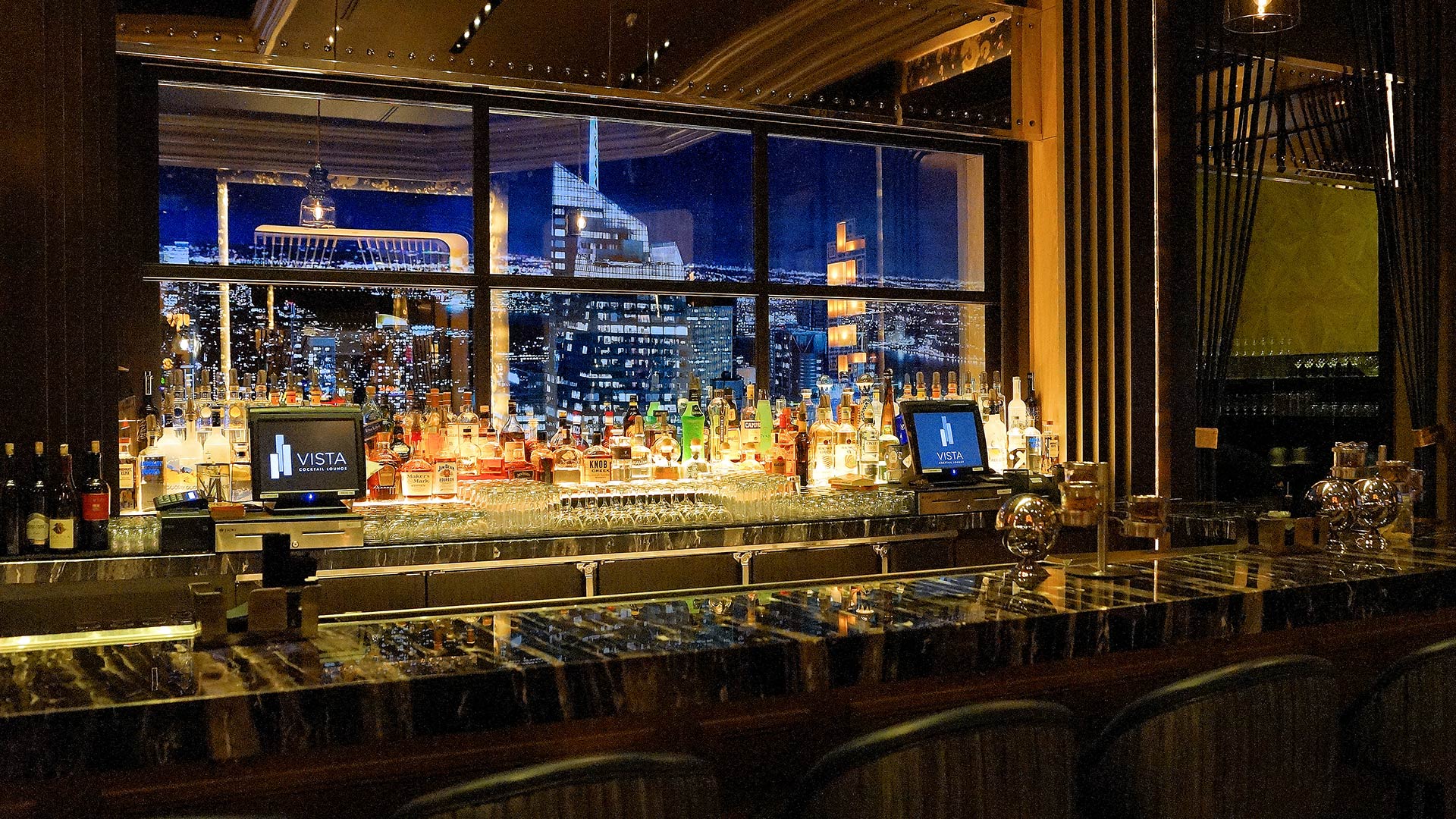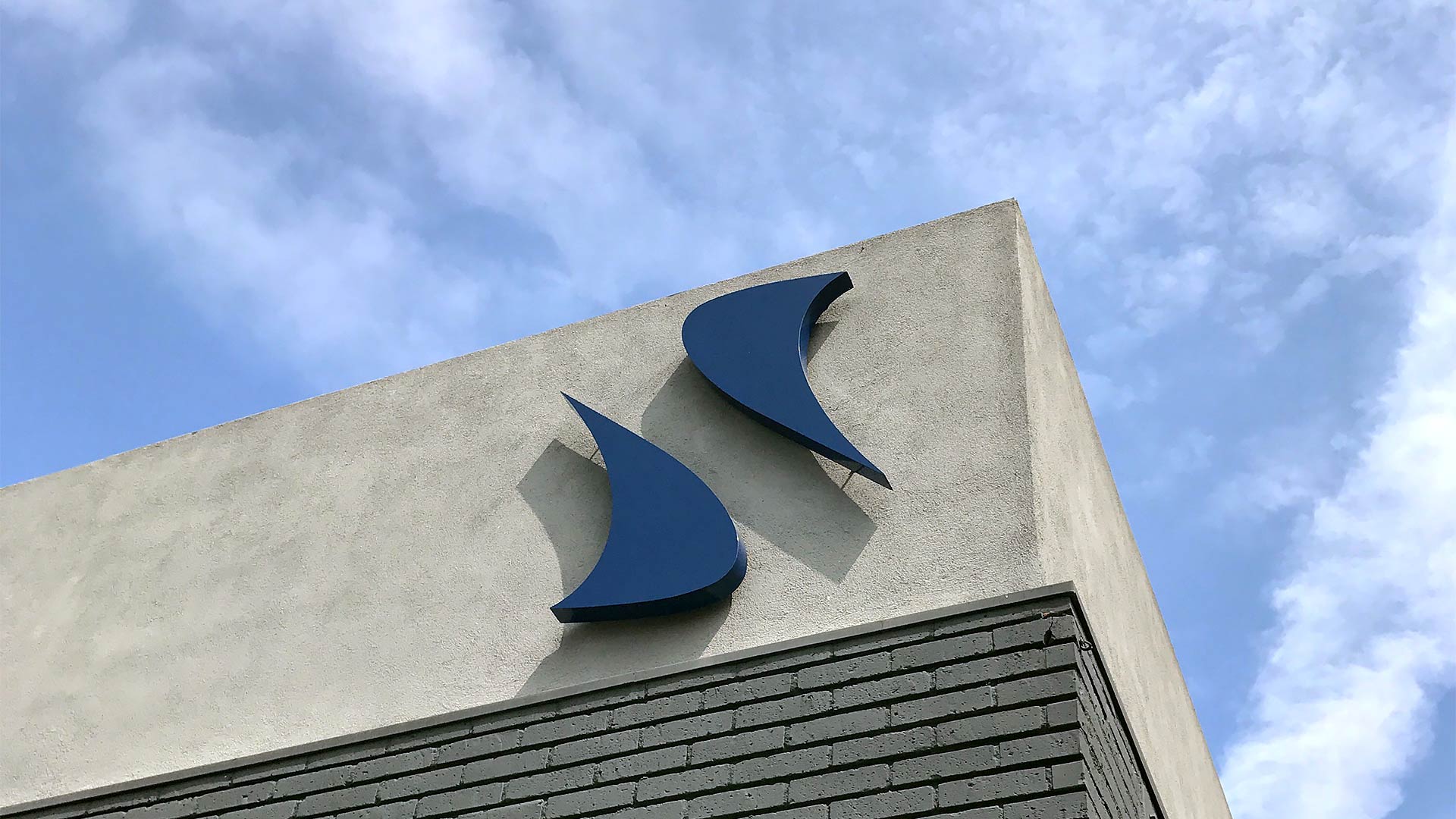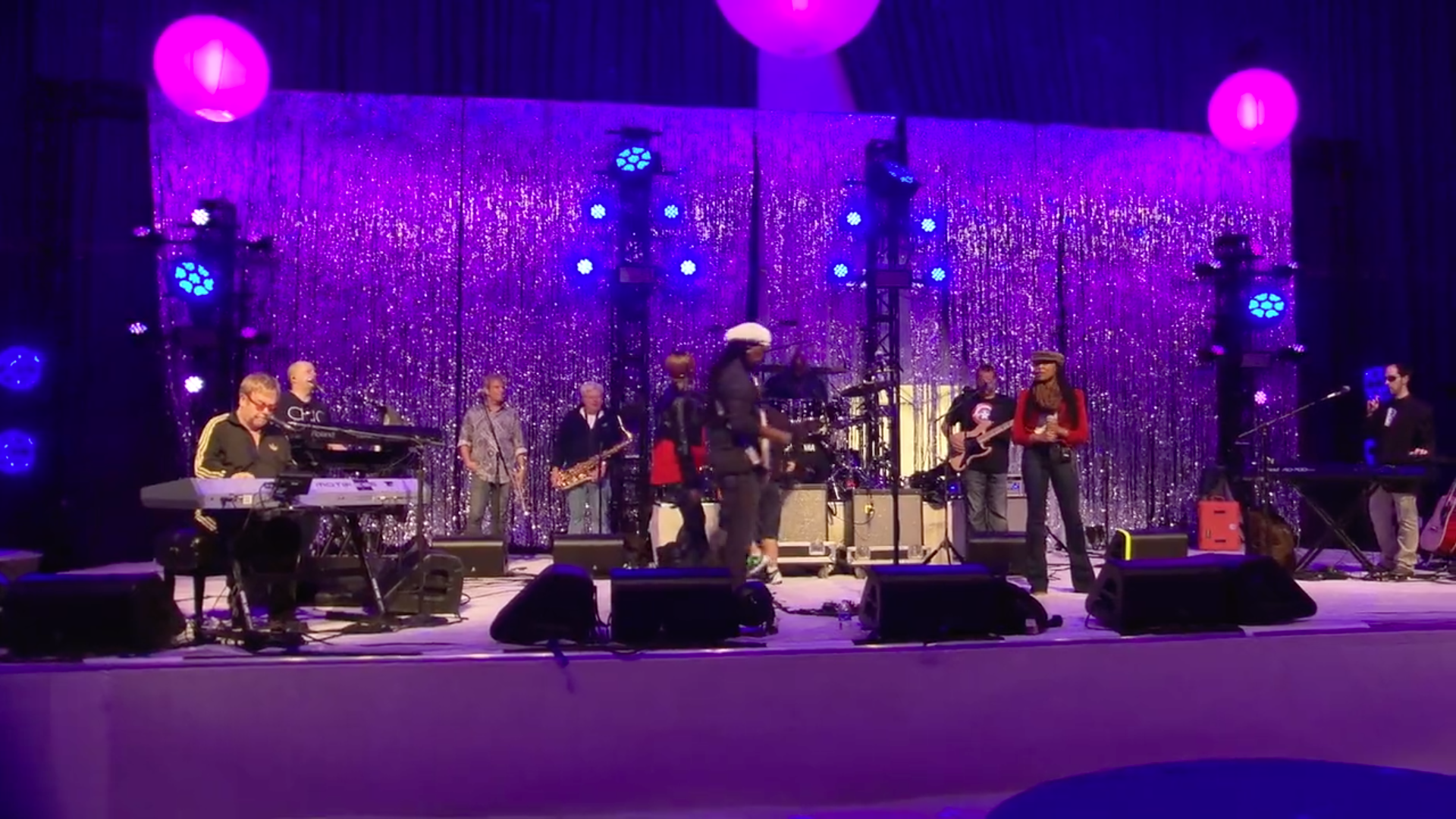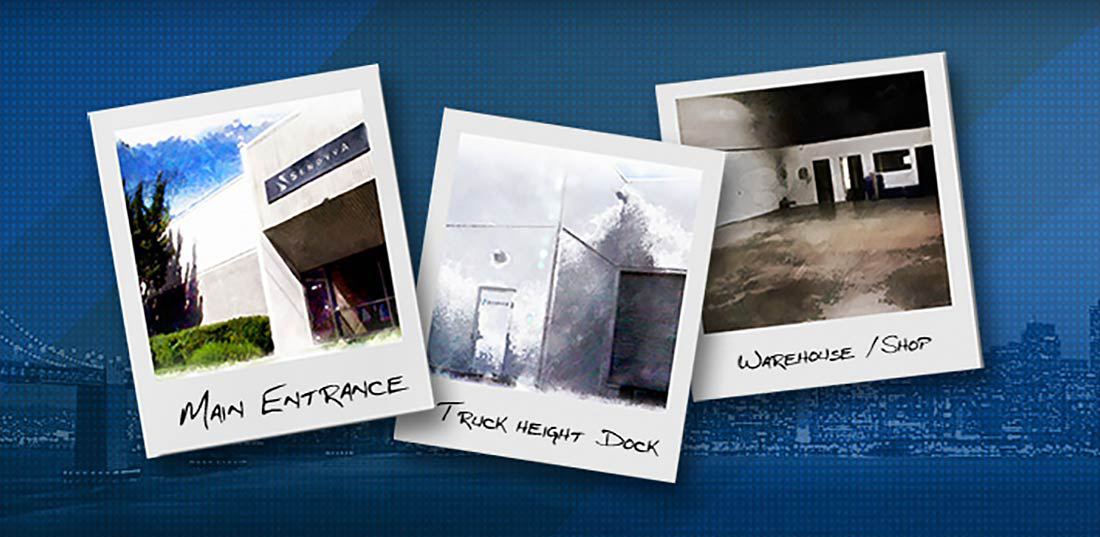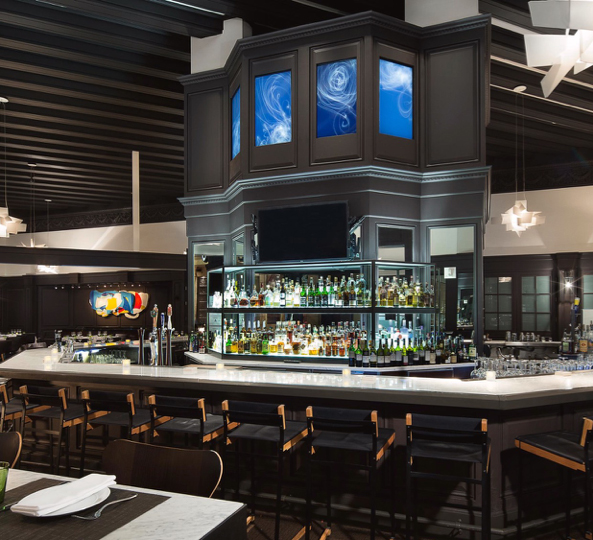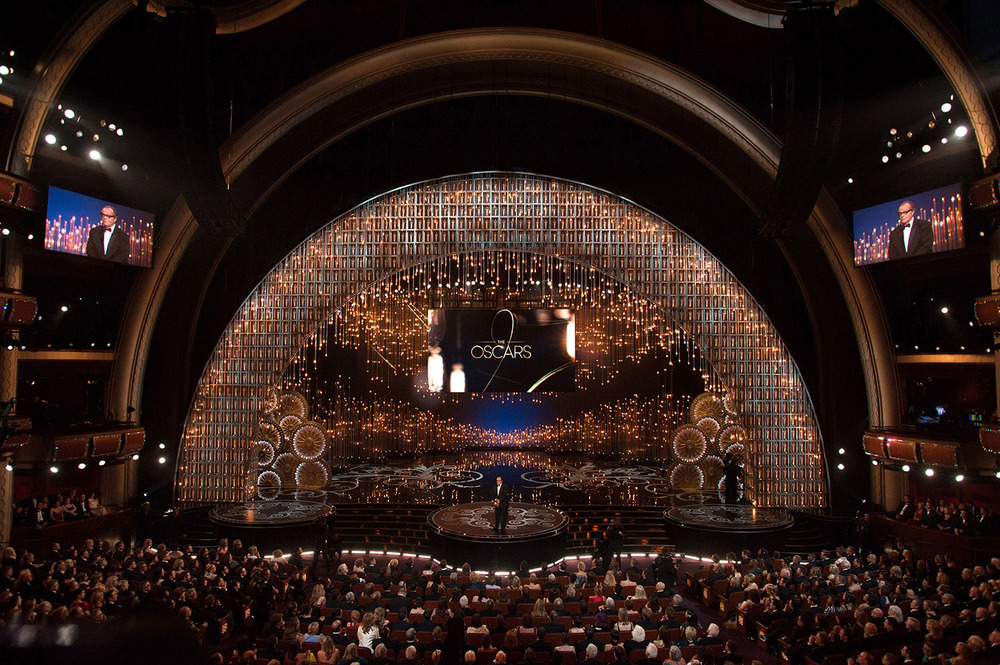Motion Designer
Position: Motion Designer
SenovvA specializes in technology, production, and design to tell stories in innovative and electrifying ways that excites and engages audiences globally. Headquartered in Los Angeles, we are a growing team with offices in the US and Canada. Our group of collaborative individuals have expertise in high-end design, production, content, and management.
Our Canadian studio is looking for a creative individual with a diverse skill-set in post-production, who has a passion for storytelling. Our client work is ever changing, and includes narrative driven stories, promotional and commercial videos, live event content, and much more, all across a wide range of industries. Reporting to the Creative Director, the Motion Designer will be responsible for the creation of client deliverables in motion graphics, video and often, a blend of the two.
You will be responsible for:
- Understanding the purpose and vision of the video and who the intended target audience is
- Creating 2D motion graphic animations and video based on a script, brief, outline or shot list that follow the director’s vision
- Colour and audio correction, grading, music editing
- Creating motion graphic assets for editors such as title cards, lower thirds, animated design elements
- Managing multiple deliverables to meet deadlines for various clients
Qualification
- Post-secondary degree or diploma in a related field
- Strong sense of graphic design and typography
- Motion graphic skills, with 3-5 years of proven experience
- Intermediate to advanced knowledge of Adobe Creative Cloud software: After Effects, Photoshop and Illustrator on Mac OS
- Video editing skills on Premiere Pro are a huge asset
- Organized approach to project file management
- Clear and concise communication skills
- Self-motivated and able to work independently in a fast-paced environment
Location: Markham, Ontario, Canada
We have an office in Markham, but are currently working remotely. You will be required to travel to the office at times to pick up hard drives or for meetings, so being accessible to the office or having a car is a must.
All candidates must submit a portfolio (website, Vimeo/Youtube link, etc.) to be considered. Please provide explanations on the roles you played in the work you submit.
If you’re interested in applying for this position, please submit your resume, cover letter, and portfolio.
We thank you for your submissions, but only those selected for consideration will be contacted.
Elements of Virtual Events No One is Talking About
Would you like to read another article about virtual events? One that starts with comments about being 1 year into the pandemic and… I’ll stop there. No one needs another one of those. That’s why I’d rather speak to elements that no one seems to be talking about when it comes to energizing, exciting, and interesting your audience with successful virtual events.
It is true that, with just one year’s experience, there is a lot that has been learned. That’s true for planners, to platforms, to producers, speakers, and most importantly, the audience. We’ve seen plenty of perspectives, and to be honest they all seem to blend into one. Focus on the structure and flow. Keep presentations (and days) short. Pre-record and make on-demand presentations available. Use a host or MC. Add social and networking time. And so on. Oh, and they also focus on the technology and speaker/presenter side. Purchase good quality web camera and microphone. Get your lighting right. Speak to the camera. Make sure you have a background. If you have the budget, use a broadcast studio. I could go on.
Those are all valuable nuggets. But by now, we know all that. I’d rather focus on those elements that are not spoken about. The pieces of the puzzle that SenovvA has found to be paramount to the success of your event. There are four items in particular that we’ve learned can really help to elevate your event above all others.
Digital meetings should be built by reverse engineering.
In most cases, when working with a production agency, your first step is to develop the creative based on your messaging and strategy. From there, you develop the agenda that works best for your general session.
Effective virtual meetings require a different process. Creating the agenda first is a valuable tactic to ensure that your messages are delivered effectively. Why? We have all seen the reason: virtual meetings cannot flow in the same manner as a live meeting. They are an entirely different experience than what unfolds at a live event.
With an efficient structure established, you can then wrap that session in a creative foundation that is specifically designed for the uniqueness of the virtual format.
Compare virtual meetings to television broadcasts, not live meetings.
Virtual events are not just meetings; they are broadcasts. To keep your audiences’ attention and engagement, you should think like a television producer. Think of the story. The plot. The characters. The tactics that stock curiosity, and keep the audience wanting more.
Some of the most valuable techniques include a faster pace with quick setting changes; bringing in content experts; and using a robust storytelling methodology. This last element is especially important, and it’s one that has always driven SenovvA’s high-profile work in events, creative, and our video production services.
Of course, while we conceive of it as a broadcast, a virtual meeting is still a “show”. Organization, creative, production, staging and show management are paramount. The same team members are needed to produce a virtual event — like technical directors, producers, stage managers, creative and content producers, show callers and technical staff – but every one of them must recognize that their approaches must be reimagined for the virtual environment.
Visual design and layout are critical.
The design of your event is more than just the structure, creative and videos. It encompasses all aspects of the meeting and this includes the screen looks for your broadcast and portal. You have to think about how the entire event is packaged.
How do your screen states maximize content? How do you incorporate your brand effectively on screen? How are your speakers framed? Do your speaker’s backgrounds align with the broadcast background? These are all questions we ask when designing for your event. We make things look great on screens for years and virtual events are no different. Simply dropping your meeting onto Zoom isn’t enough – not when so many highly advanced and conference-specific platforms have emerged in the past year.
Your platform is a tool, not a solution.
Speaking of platforms, there are many tools needed to create a successful event. Creative foundations and theming, video, engagement tactics, networking, and social events are just some examples. Your platform is just another one of these tools for your event.
Unlike in a live meeting, picking your venue first is not the best approach. You’ll be locked into the parameters of that platform, and not free to imagine how your event could unfold. Instead, develop your agenda, creative your foundation, understand how to engage your audience best, then choose the best platform – the best tool — to combine these elements and bring your message to vivid life.
Ultimately, there are a lot of learnings about virtual events that can now be considered universal. It’s the next-level insights that will define the events that are most memorable, most motivational, and most effective. Have this in mind as you join with a partner to support you and develop every element of an exceptional virtual event.
Silverpoint is joining SenovvA Inc.
Markham’s own Silverpoint Media Inc. has joined LA-based SenovvA Inc., a leading global media technology solutions company – curious, creative and motivated to be anything other than ordinary and driven by a desire to push the limits of what’s possible. This merger will allow SenovvA to expand its service offering to clients with custom content creation and technology solutions for the entertainment, special event, architectural & building, and media services industries. SenovvA will now have touch points across the globe as they continue to serve their growing roster of clients both locally and internationally.
We’re excited to join the SenovvA family. Telling stories is what we do, it’s in our DNA. The merger with SenovvA expands our creative possibilities beyond the traditional screen experience and allows us to reach larger global audiences. It opens up a whole new realm for us.
– Keith Chang, CEO of Silverpoint Media
About Silverpoint Media
Silverpoint Media Inc. is a full-service content production studio specializing in video, animation, motion design, scripting and score composing. We work with clients at the earliest conceptual stages of a project, all the way to the final touches. From scripted projects to documentary-style content, we’re committed to crafting an authentic end film that ultimately connects with your audience. Our clients include CBC/Radio-Canada, Cadillac Fairview, Deloitte, Milacron, Metro Toronto Convention Centre, OMERS, Hudbay Minerals, Porsche, Up Cannabis, Nobis and Equitable Bank.
About SenovvA
SenovvA hijacks technology to tell your story in innovative and electrifying ways to excite and engage audiences globally. Headquartered in Los Angeles, we are a growing team with offices in New York, San Francisco, Toronto, and Dublin. SenovvA is a group of collaborative individuals with expertise in high-end design, production, content, and management. Our work can be seen across the world through live productions, special events, and temporary and permanent installations. Our clients include the Academy of Motion Picture Arts and Sciences, Mercedes-Benz, Samsung, CBS, Viacom, Rockwell Group, Elton John AIDS Foundation, Nickelodeon and the Ronald Reagan Presidential Library & Museum.
Recreating The Situation Room
BCS (before computer simulations) current events were considered about as popular as watching grass grow, aside from discussions and role playing in school. There was no active participation. Games were played mainly outside in a park, with the exception of board games or crossword puzzles inside the house.
Fast forwarding to the present, students are most fortunate to be actively immersed in a fictionalized AV simulation based on a real-life event: the assassination attempt on President Ronald Reagan. Thus was developed the Situation Room Experience (SRE) at the Ronald Reagan and George W. Bush Presidential Libraries that are located, respectively, in Simi Valley CA and at Southern Methodist University in Dallas TX.
SenovvA (Sensory Innovation) of Los Angeles did the design/build. Our integrator interviewees are Curtis Kelly, CTS-D, DMC-D, Executive Producer/Chief Designer, and Coty Shipe, Systems Engineer/Chief Engineer on the project. (Additional SenovvA credits include System Application Programmer Lauren Sheridan, Application Engineer Andy Kulhavy and System Integration Technician Wayne Martinez.) Mira Cohen, Director of Education with the Reagan Presidential Library (www.reaganlibrary.gov), offers the client perspective.
Vista Lounge | Caesar’s Palace, Las Vegas
Las Vegas, NV – Caesar’s Palace recently upgraded several of its lounges and bars including what is now the new Vista Lounge, a unique immersion experience featuring the latest in video technology along with a sophisticated Martin Audio sound system.
SenovvA of Los Angeles, San Francisco, New York and Toronto, a design and management group specializing in the entertainment, special event, architectural-construction and media services industries, was tasked with the design and integration of this one of a kind multimedia project.
Bill Sage, SenovvA Account Executive for the project, explains, “We worked with the Rockwell Architectural Group in New York and Bergman Walls and Associates in Las Vegas. They came up with this immersion concept for the Vista Lounge that makes you feel like you’re at the top of a skyscraper looking out of the windows down at panoramic skylines of cities like Dubai, New York and Beijing through the use of 4K UHD videos in the windows and LED panels in the lounge’s ceiling.
“We had to come up with the video and audio elements to make their vision and intent work,” Sage adds. “We started with 32 NEC monitors projecting the programmed city views from a Watchout video media server that synchronizes and runs the video to all of the different displays with Crestron processing and control.
“The videos overlook various cities with real time effects like day to night, building office lights, airplanes, clouds and rain striking and running down the windows. The lounge can also load in content for branded environments and special events when a sponsor wants to buy out the bar. We also put 55 Oracle 8mm LED panels in the center of the lounge ceiling with special glass and effects that are synced to the window content to simulate a large skylight.”
Choosing a sound system to complement the video scheme was easy for Sage and Curtis Kelly, Lead for SenovvA’s Systems Design Group, given they share over 20 years of experience with Martin Audio in both the live sound and installation markets.
“Vista is supposed to be a relaxed, low-key alternative to some of the more over the top clubs at Caesar’s,” says Bill. “There’s a DJ who plays what I’d call chill-out music that doesn’t overwhelm the patrons with sound and reinforces the romantic mood. The client wanted an Ultra-Lounge system with high quality sound they could feel, which added up to Martin Audio for us because Curtis and I knew it would give them everything they wanted and more.
“We mounted five Martin Audio DD12s high up on the walls at angles facing the bar which provide real smooth coverage for the room because of the Differential Dispersion™ technology in the boxes. There are also two PSX compact powered subwoofers, one buried under the DJ booth and one on the other side of the room which worked out well because we didn’t have space for amps in the rack room and the built-in processing warms up the sound without overpowering the room. We also installed 8 Martin Audio C8.1T ceiling speakers for additional fill and to supplement the system when playing low-key background music. A BSS BLU-80 Audio DSP system provides additional processing.”
In addition to Sage and Kelly, crew for the installation included Project Manager Coty Shipe, Video Server Programmer Andy Kulhavy and Crestron Programmer Micheal Block.
Asked about the client’s response to the installation, Bill confirms, “They really love the Martin Audio system. Vista Lounge is a nice counterpoint to some of the other clubs at Caesar’s because the videos really take you to other places and the sound is subtle but fantastic.”
For more about Martin Audio, please visit www.martin-audio.com
SenovvA’s 10th Anniversary
SenovvA staff from all over North America gathered to celebrate our historic 10th Anniversary on May 28, 2015 in Los Angeles. In honor of this significant milestone, the entire team welcomed clients, vendors, collaborators and friends to an open house at our newly opened 11,000 sq. ft. headquarters.
Originally founded in 2005 by K Lee Harvey, Frank McMinn and Robert Balmet, SenovvA has grown into a team of thirty full-time employees with regional offices in New York, Toronto and San Francisco.
Starting with just a few producers at its inception, SenovvA now offers a broad range of production management services to the entertainment, special event, architectural / building, and media service industries.
“I am so proud of our team and what we’ve been able to accomplish in the last 10 years,” said CEO, K Lee Harvey, “With our expansion in staff, newly opened regional offices and the addition of our Advanced Development Projects Team, we are well positioned to offer our agile innovations and solution driven production services for more exciting years to come. Many thanks to all of our partners, collaborators and friends who have joined us on this incredible journey.”
Here’s a look at our current operating units and some examples of our proud achievements in the last 10 years, all made possible by the talented team that is SenovvA.
Production Services
Broadcast & Film
Leading media networks turn to SenovvA for LED and projection expertise on the most watched televised events throughout the year. Our display work on the Academy Awards broadcast is seen by more than one billion people in 225 countries and territories around the world. Hundreds of millions more see our other televised and streamed events from broadcast and cable networks across every digital platform available.
SenovvA’s Production Services Group is headed by Principal Partner & President Frank McMinn. His teams projects have included The Primetime Emmy Awards, Billboard Music Awards, Kids’ Choice Awards, The BET Awards, as well as upfronts for NBC, CNN, ESPN, and the Television Critics Association’s biannual Press Tours. The production services team includes Executive Producer Dave Taylor, Senior Producer Marcus Irwin, Executive Producer Tristan Valencia, Technical Producer Walt De Jong, Producer’s Eric Leverton and Steve Nider, Project Manager’s Joe Sebenius, Robert Ingram, Brian Tracy, Ian Strimple, Daniel White and Andy Kulhavy.
“Our deep understanding of client needs and our best-in-class teamwork delivers premium management expertise that brings our clients back year after year,” said Frank McMinn, “You can order gear from anyone – but the brain trust needed to create extraordinary events is where we shine.”
Corporate & Industrial
SenovvA’s long history of design and management enables us to partner directly with corporate clients, agencies, PR firms, and event designers. We service leading brands from consumer electronics, automotive, aerospace, entertainment and media industries and our projects have included: press events for Mercedes-Benz and Samsung; store openings for Hugo Boss and Desigual; fashion shows for design brand Y-3; sponsored events for Red Bull Mind Meld at Ultra Music Festival, H&M Stores at Coachella Music Festival; trade show displays for AgustaWestland’s exhibit at Heli-Expo, as well as cutting edge consumer activations like Time Warner Cable Studios Experience in NYC.
SenovvA has proudly managed all aspects of production for the Annual Elton John AIDS Foundation Oscar Viewing Party – Hollywood’s largest, longest running outdoor charity event associated with the Academy Awards, as well as Ellen Degeneres 50th Birthday Celebration on the backlot at Warner Bros. Studios.
Theater & Performing Arts
SenovvA plays a fundamental role in the live theater and entertainment world. From Broadway to Vegas to regional theaters and touring shows, our work has been consistently recognized on the live stage as we work with innovative production designers to deliver media systems that enhance, involve and delight audiences. In addition to providing and integrating technology for the stage, we have been Producers, Associate Producers and provide artistic direction services.
The Theatrical Division, is headed by Arianna Knapp, SenovvA’s Director of Communication & Strategy / Theatrical Producer, “We look at a project, an idea, a vision or a script, then match our expertise and resources in order to create a collaborative partnership that delivers amazing results in real-time, every time.”
Broadway Theatrical Projects have included Something Rotten!, Hedwig and the Angry Inch, Lucky Guy, Bring it On and American Idiot. Touring shows have included Rain, Backbeat, and Bring It On. SenovvA has provided technology and expertise for; The Public Theater, The Old Globe, North Shore Music Theatre, The Alliance Theatre, Berkeley Rep, Steppenwolf, and Center Theatre Group.
Systems Design Group
Launched in 2012, SenovvA’s Systems Group is headed by veteran Technical Director Curtis Kelly. Curtis’ team is responsible for permanent installation projects and supported by our newly opened San Francisco Bay Area Office, in association with our expanding work with nearby technology clients in Silicon Valley. Systems Group projects have also included exhibits at the Reagan Discovery Center in Simi Valley, The Vista Lounge at Caesars Palace, Las Vegas and an interactive bar display at Wolfgang Puck’s Lupo Restaurant at Mandalay Bay Resort & Casino, Las Vegas.
The team is led by Peter Waxdal in Project Administration, Account Executive Bill Sage with Project Manager’s Fred Jacobo and Coty Shipe, and includes Executive Producer Tristan Valencia, and Scott Kellogg in Business Development.
Design & Integration
In partnership with leading architects, technology giants, and entertainment groups, we use our technical knowledge and production experience to bring their visions to life.
SenovvA’s system engineers, programmers, content designers, and installers are the “quiet success story” in the retail, museum, nightclub, traveling exposition, and architectural media. From video walls to projection systems and installations, to content servers, to unique audio and control systems, SenovvA brings our vast technical and creative experience to support our partners in the architectural and facility management industries.
Management & Contract Services
SenovvA leverages its vast experience to deliver strategic consulting and management of high-tech media facilities. Our services include event production design, equipment rental, technical staffing, systems service agreements, and allied field partnerships.
We offer a variety of unique facility management service that ensures the success of any services. Our operations are tailored to meet the differing needs of conventional audio/visual in-house service providers and labor bureaus. We offer contract technical training programs, as well as the authoring and delivery of services for production partners and staging houses. With direct access to our other operating units, along with the depth and flexibility of our facility-based services, SenovvA is unmatched in an otherwise commodity driven industry.
Advanced Development Projects (ADP)
Headed by Director, Design & Development P. Michael Anderson, the Advanced Development Projects group was created to be both SenovvA’s research and development group, as well as our own “in house-special response team,” able to respond to the most demanding projects we encounter.
“It’s not about what we can do “FOR” you, it is about what we can do “WITH” you,” said P. Michael Anderson.
ADP develops new services and product lines for SenovvA’s innovative production and creative services, and exists in a place that we often can’t reveal or discuss in open marketing and media channels. In many cases, ADP and Systems Group staff are embedded within a client or partner organization and culture, rather than operating from SenovvA offices.
Supporting P. Michael Anderson in the ADP Group are resources from SenovvA’s existing talent base that include Producer Vince Pecchi, Media Director Sean Tarantino, and Chris Blanchard in Operations & Logistics.
SenovvA Canada
Dave Crainford, General Manager SenovvA Canada continues to develop SenovvA’s services and expertise in Canada and is expanding our reach into international markets. Working out of our office in Toronto, Dave collaborates with clients including; the Munk Debates, Hermes, the City of Toronto, Amgen, and Pattern Energy.
SenovvA Operations
Chief Operating Officer, Robert Balmet manages support for all SenovvA product service lines. “With projects happening all over the globe, everyone of our producers and designers are connected to our network of resources, and each bring our collective insight to all the sectors we engage with.”
Robert’s team includes Office Manager Victoria Montalvo, Operations Manager Juan Alba, Facilities Manager Gina Farina, Accountant Aren Esaian, and IT Systems Engineer Michael Sheliga.
“Together with our partners, we are poised to take on the challenges and successes that we’ll encounter as a team over the next ten years.” – K Lee Harvey
ShapeShifter Fixtures Shine at EJAF Oscars Party
Each year during Academy Awards week, Hollywood’s A-List comes out to raise millions for Elton John’s AIDS Foundation. For the last 15 years, SenovvA has brought increasingly spectacular productions to the Elton John Foundation’s annual Oscar Viewing Party. Production / Lighting Designer Peter Kyte has designed the show for the last seven years; for this latest event, he utilized High End Systems SHAPESHIFTER C1 and W1 automated fixtures as the main effects lighting fixture for the evening. Joining Kyte on the SenovvA team were programmer Fraser Kerrigan, Master Electrician Sean McGrath and Project Manager Brian Tracy. Executive Producer was Marcus Irwin.
Peter explains, “Our parameters with this show are primarily to create something unique, different than our past designs, and to work within the parameters of the temporary structure that we build. We employed a very ‘old school Studio 54’ theme, and when I first saw the SHAPESHIFTERs at LDI, I thought they were very interesting, and would be a great center point for the event. I envisioned a 1970s looking flower effect that would run across the upstage, so I used the SHAPESHIFTERs as the centerpiece of the flower, along with smaller LED fixtures surrounding them.
“One of the biggest challenges working in a tent was the weight restriction. We used a new tent company and they were very good about letting us know the actual weight restrictions and keeping us to that number. I couldn’t put a lot in the air, so I used Airstars because they’re light and gave me the ambient light that I needed, and a very small FOH rig just to get the heat on the stage that we needed. The SHAPESHIFTERs were used for all the effect lighting. I had C1s and W1s – they looked great and worked really well. They really helped make our design pop.
“We had the C1s as the center of the ‘daisy’ and the W1s were placed lower as sort of a beauty uplight type thing from behind. We spent a lot of time exploring the range of options on the C1s. The W1s were a bonus but we thought they would add a nice divine lighting effect coming down from behind. As we were in the practical moments of setting up, we decided to move them off to the side and a little lower. They worked out really well, and we were able to hit the 3′ disco mirror ball as well.”
According to Kyte, Programmer Fraser Kerrigan ran the SHAPESHIFTERs in full mode, and really put them through their paces. “It’s an entirely new way of programming,” says Peter, “and it’s possible for designers to be overwhelmed, but the payoff is really worth it. It may take a bit longer when you first get going, but once you get into this fixture you can get some really great effects.”
In closing, Peter comments on SHAPESHIFTER’s importance as a lighting tool: “With video and pixel mapping now taking a lot of work that programmers used to do – and making it simple, this adds another vital tool for your toolbox. Even though the technology is very 21st century, in my opinion, the programming and the result is a very pure lighting type of effect; you’re dealing with the moving light on a whole new scale. It is so new, and is a revolutionary new way of thinking about how to program, but yet the effect for the audience is so striking. With better tools to work with, the results can be spectacular.”
SenovvA Opens San Francisco Bay Area Office/Warehouse
Los Angeles, CA (March 10, 2015) – SenovvA, Inc. (“SenovvA”), a leading production, design and management group with offices in Los Angeles, New York, and Toronto, today announces the expansion of its operations to include an office and warehouse in San Francisco, California. Through the new location, SenovvA expands its foothold in the North American market to provide services to the Digital Cinema, Theatrical, Broadcast, Industrial/Corporate, and Architectural System Design and Installation sectors.
“There was a time when SenovvA’s Broadcast clients were dealing with Los Angeles, our theater clients dealt with New York and our systems design and integration clients worked with a team that was spread across the country. As SenovvA enters it’s second decade, we have partnerships from all our markets working with us from all our offices. There is Broadcast work in New York and Las Vegas, there is theater work in Toronto, San Francisco, New York and Los Angeles, and of course the corporate industrial events are happening everywhere. This additional location gives us an even greater agility to serve all our partners.” – SenovvA’s Director of Strategy, Arianna Knapp
“This expansion further demonstrates our commitment to provide design and management for technology visionaries as well as theaters, corporate clients, and architects/builders” said Kevin Lee Harvey, CEO of SenovvA, Inc. “We will have a top notch Bay Area team including Bay Area natives Bill Sage (Account Executive Systems Design Group), Scott Kellogg (Business Development), Fred Jacobo (Project Manager) as we open our doors April 15th”
Introducing Bill Sage:
Bill Sage returned to his beloved Bay Area in 2012, taking on a new role and gaining valuable skills in estimating, contract negotiation and document management for public works and major sporting arena projects. He has applied these skills to major projects including the paging system and tower renovation at San Francisco International Airport’s Terminal 3; Los Angeles Dodgers stadium audio renovation; and the mass notification system installation at the Port of San Francisco’s new cruise ship terminal.
Joining SenovvA has reunited Bill with many trusted and respected colleagues. He is thrilled to be a member of the team and looks forward to playing his part to expand and develop opportunities for SenovvA in San Francisco and beyond.
Sign Language
Walk into any bar, and it’s a safe bet you’ll find at least two things: digital signage and a mirrored wall of booze. The bar at Wolfgang Puck’s Trattoria del Lupo restaurant in Las Vegas is no exception, but it also bucks the stereotypes about what that signage can add to the experience.
Tucked inside the Mandalay Bay Resort and Casino, Trattoria del Lupo opened in 1999 and recently completed a major remodel that included adding interactive digital art to the bar in the middle of the restaurant. Four 42in. displays now adorn the top of the bar, but they’re not there to show ballgames or talking heads. Instead, they show streams and balls of light that, thanks to infrared cameras, ebb and flow based on bar patrons’ movements. For example, reaching for a drink can be enough to make the streams move in a way that mimics the breeze of an arm.
Interactive art is a rarity in bars and restaurants. So the artwork—titled “TRAILERS_LUPO”—was a test case not only for the Wolfgang Puck Fine Dining Group, which owns 14 other restaurants in cities such as Beverly Hills, Dallas, and London, but for the rest of the industry, too.
“It’s something they’re doing to change the way people look at digital signage and digital art,” says Curtis Kelly, who leads the systems design group at SenovvA, the Los Angeles-based integrator on the project. “I really applaud them for it. That’s been so successful that they’re now planning to do more restaurants. We’re getting ready to do another commission.”
Behind The Scenes
In a way, the Trattoria del Lupo project got its start backstage at the Academy Awards, where SenovvA did the LED wall behind the stage. Digital artist John B. Carpenter was there, as well.
“The thing that really impressed me about their work at the awards was the seamless integration of the technology into the stage design and the way they were able to get a non-pixelated image for the audience by using a slight diffuser in front of the wall,” Carpenter says.
When Carpenter received the Trattoria del Lupo commission, he asked SenovvA to help execute his vision. One challenge was selecting the right hardware. Although many commercial AV installations now use consumer-grade monitors because they’re inexpensive, SenovvA and Carpenter agreed that approach would be shortsighted.
“It would be cheaper to do it that way, but you’re going to replace them four times [as often],” Carpenter says.
One reason is because “TRAILERS_LUPO” requires displays that are in portrait mode.
“You have to have a commercial display if you’re going to run it in portrait orientation because consumer displays don’t run properly in portrait,” Kelly says. “They’re designed to run and cool in landscape mode.”
SenovvA chose LG 42VS20-BAA LCDs. Kelly had used LG displays on other projects, but not this particular model. After comparing specs and talking with LG reps, this model stood out for several reasons:
- Its cooling adapts based on orientation, helping maximize its lifespan and avoiding downtime. A high-quality video card and power supply also help ensure reliability.
- It provides the high contrast ratio necessary to avoid washouts and blooming, as well as ample control of contrast and brightness. “With plasma, we probably could have got better black levels, but we wanted something that was going to be more robust on a commercial level running 24/7,” Kelly says. “Most digital signage displays are all about the nits. For us, it was more about contrast ratio and the black levels for a really natural look.”
- It includes a broad, deep menu, including options for scheduling and auto reboot, all accessible remotely from a Web browser.
- It offers an Ethernet port for remote access and monitoring, a feature that Kelly liked from other LG models. “I love them because they have a very good control protocol over IP or RS-232. Very robust. A very easy language to work with,” he says.
Networkability also was key for connecting each display to an Apple Mac Mini over HDMI. The infrared cameras—mounted underneath each display—connect to their respective Mini via USB.
Although they’re designed for the consumer market, Minis are increasingly common in pro AV. They were an ideal fit for Trattoria del Lupo partly because they have a solid-state drive (SSD), providing more reliability than a hard disk. SSDs also enable faster boot ups, which was a factor because the system is cycled off once a day. This clears the memory to ensure everything stays performing smoothly. After all, artwork that’s meant to mimic human movement and the wind can’t exist in fits and starts.
“It’s a very natural, smooth flow,” Kelly says. “So there had to be some specific things that had to be in the design development to make sure that the displays had a fast refresh rate so there wouldn’t be any jogginess. The computers had to have SSDs instead of [hard drives] because it’s running 24/7. They had to have fast refresh rates on the video cards.”
The infrared cameras also had to be flexible.
“The Kinetic cameras aren’t just standard ones you buy off the shelf,” Kelly says. “They’re professional models that can handle custom drivers.”
Thinking Small to Push the Envelope
When the system was ready for installation, Carpenter didn’t simply hand SenovvA a thumb drive or DVD of code for them to load into the Minis. Instead, he was hands on, which isn’t surprising considering his background. Carpenter’s day job is as an engineer at Oblong Industries, a company whose founder inspired the gesture technology seen in the 2002 Tom Cruise movie Minority Report. Carpenter also has a private art practice, and in both, much of his time is spent programming.
“TRAILERS_LUPO” uses a program called Processing, a creative coding environment that Carpenter developed for artists and designers. The algorithms change the artwork based on environmental factors, so it never looks the same way twice. “It means you’re not dealing with a looped video,” Carpenter says. “You’re always getting something different.”
For Carpenter, the Mini is an ideal environment for realizing his visions. “One of the things we talked about is whether to use a simple video player or whether we needed a computer,” he says. “I like the Mac Mini because I’ve worked with them a lot, and they’re small and reliable.
“It’s the best solution for me right now. It’s a good space to write code in, and it behaves fairly predictably and reliably. I know a number of artists and creative coders that work with them just for the ease of installation.”
New Life for a Dead Space
Trattoria del Lupo is an example of some of the ways that pro AV is changing. First, the use of Mac Minis instead of specialized AV hardware is part of the ongoing trend of AV-IT integration. Second, the project highlights the benefits of having the integrator work early, often, and well with a specialist from a different field. In some cases, that’s a building management engineer or an architect. Here, it was an artist. “Good open conversation, plus trusting that each group is good at what they’re doing” is what Carpenter believes is key for a great working relationship. “The expertise that they brought with the hardware and installation was fantastic. Working with SenovvA allowed me to focus on the code and artwork. I knew they were going to take care of the hardware and integration.”
“TRAILERS_LUPO” has been enough of a success that more interactivity is coming. The bar currently has four displays, but there’s room for another two if Trattoria del Lupo decides to expand the artwork. In the meantime, SenovvA and Carpenter have begun work on the area just behind the bar. Currently there are several French doors that lead to a small storage area. Those are being modified so that patrons see what appears to be a live street scene, with people walking by and trees moving in the wind. During the daytime, the scene will be lighter. The artwork is called “FIELDS_sinapis.”
“It’s a feeling of being somewhere else,” Kelly says.
In future interactive art projects, SenovvA will apply what it learned with “TRAILERS_LUPO.” For example, Carpenter currently accesses the system via a VPN, a design that SenovvA probably will avoid in the future.
“Since it’s more involved now with the systems, we’ll probably get involved with their IT department to plan on having a port opened just for us to keep it easy,” Kelly said. “They’re going to do more of these down the road, so maybe it’s time to start talking to them about integrating our allocation in their network for taking care of things. That’s becoming a trend. Everybody has to give people ports for the outside world to come in.”
That’s also yet another example of why AV integrators need IT skills these days and why they need to come into a project early on, when it’s cheaper and easier to make fundamental decisions about networks and other aspects.
“People call us to do a lot of black-box, weird things,” Kelly says. “We’re lucky enough to sit at the owner’s table at the stakeholder level to help them figure out if things can become reality and help them save money from the beginning. We value engineer it before it even gets to the RFP.”
Reinventing The Academy Awards
The Oscars has always been one of the most interesting gigs you could land– after all, what better platform to demonstrate your technical chops than the most prestigious entertainment/technology awards ceremony there is? Over the years we’ve reported on the video technology used at the Academy Awards– and we’ve seen different mixes of video with traditional staging technology. We’ve seen the venue itself evolve its technology resources with the changing needs of the Oscar production as well as for other live event needs. This year’s Oscar ceremony saw brought some interesting twists to the narrative.
Since the venue previously known as the Kodak Theatre – with its 3,400 seats, the theatre has hosted the Oscars since 2002– was rebranded the Dolby Theatre in June 2012, the venue has hosted premieres for the Oscar-nominated films like “Brave” and “Zero Dark Thirty.” It has also hosted Cirque du Soleil productions, and a wide variety of concerts. In preparation for the 2013 Oscars ceremony, Dolby came in and working closely with this year’s Academy Awards producers Craig Zadan and Neil Meron, Oscar telecast director Don Mischer, the film studios, and ABC– made sure everyone was on board for retooling the show to be broadcast in Dolby Surround 5.1, including every movie clip and taped segment. That included mounting 187 new loudspeakers in the theatre. In addition, new for this year, there was a new VIP lounge with a fabric ceiling designed to create the look of a sound wave, a 7.1 channel Surround Sound installation and a 84-inch flat panel display that showed a live feed of the Oscars broadcast. The process actually started last summer with the installation of a Dolby Atmos system, for the release of the movie “Brave” that was the first film to use the system (in fourteen theaters in the U.S. and Canada).
“Atmos, at any one time, can have 128 sound objects running,” said Dolby’s David Gray. “Pieces of sound can be placed anywhere in the room. Pieces of sound can be placed anywhere in the room. The Dolby Theatre has so many speakers–187– receiving so many commands, including, for some showings, an array that runs vaulted overhead–that it takes three processors to control them all.”
For the 85th Academy Awards ceremony, held Sunday, February 24th, at the Dolby Theatre, the buzz in the press was that the producers chose to go with a more traditional set design than in recent years. In its ongoing effort to retool the Oscars– always chasing new viewership– this year Tony Award-winning Production Designer Derek McLane was tasked to “add a fresh perspective to the set of the Dolby Theatre.” So would that translate to more live musical numbers, more theatrical lighting, etc, and less use of video projectors to ‘paint’ sets as we saw in some of the recent years’ productions?
Who reading this magazine could not have loved the trend that reached a peak at the Oscars in 2011, when many of the seventy-three projectors were used to “create sets,” i.e. digitally “paint” flown scenic elements, as opposed to just projecting film clips etc. In that 2011 production, the designers wrapped images to “make the set come to life.” The most impressive part of that was projecting onto four arched portals with rear-projected content framing the main stage, involving 40 Christie 10K HD projectors driven by an UberPan system of 40 outputs from twenty-two HD Hippotizers. That was the 2011 Oscars. The good news is that the same company that did that video production in 2011, SenovvA, was involved in the 2013 production. And heading up SenovvA’s team: Oscar veteran Dave Taylor, SenovvA’s Senior Technical Producer. While SenovvA has been providing the projection (and LED) for the Oscars since 2005, Dave Taylor has twenty-four years experience working on the event. Taylor first did the projection for the event at the 61st Academy Awards, and he’s been on the job ever since (first, working with AVHQ, later with Creative Technology, and now with SenovvA). But it was a somewhat different gig this year. Dave’s official credit this year was “Projection LED Supervisor”. LED? What about the video projection? This year’s production designers– in their attempt to get a more traditional, even Broadway, look and feel to the show, went a bit different direction. (But Taylor reminded me that there were other very LED-intensive years. “2005, 2006 and 2008 were all very LED-heavy years,” commented Taylor.)
Projection lovers– hang in there, there was still enough interesting projection to go around at this year’s Oscars, despite the semantics of production credits (and in an era where the public is enamored with everything “LED”.)
Dave Taylor explained that LED, indeed, played probably its biggest role to date, in the Oscars show. And as you saw if you watched the telecast February 24, 2013 while there was a good deal of video on the stage– it mainly was the old-fashioned kind in terms of content: IMAG, or film clips on screens. Anyone watching the telecast (or sitting in the Dolby Theatre) experienced, indeed, a more music-heavy, if not Broadway-style, production. Even before the many musical numbers kicked in, you could see the stage was more traditionally theatrical. Tony Award-winning Production Designer Derek McLane incorporated over 100,000 Swarovski crystals (weighing over 1,500 pounds) into the Oscar’s stage design. More than a thousand (1,051) replica Oscar statuettes– each a little larger than the real award– was nestled in its own cubbyhole in traditional proscenium and could be lit separately or in sections as needed.
The set up consisted, first, of one big screen cyclorama, permanently upstage. It was 70 X 33 foot LED wall– a 9m Winvision 9, the same system SenovvA used in 2012. The cyclorama used five hundred ninety-five Winvision 9.375mm LED tiles. For all the sets, there was a diffusion screen that stayed in place just 3/8 of an inch in front of the LED. This clever use of a diffusion screen served to eliminate the Moiré pattern you would get if you tried to video capture the screen without one. The diffusion screen also served to dampen down the lumen output of the LED. “Normally we’d run that kind of LED at about 12% intensity to balance with the other lighting etc,” said Taylor, “but with that diffusion screen–that has the effect of turning the LED into thousands of tiny video projectors projecting 3/8 inch out to that screen– we ran the LED at about 60% because the screen of course cut some lumen intensity.”
Projection lovers will be pleased to know that there was one big projection screen– this year the crew and producers called it the “big picture screen” because it was used to screen the Best Motion Picture nominee clips, and for the Governor’s award segment– that did it with big guns. Three Barco HDF-W26 projectors– 26,000 lumens each– were stacked. One of them was a back up, while two were overlapped to get 50,000+ lumens on the screen. A Stewart Videomatte 2000 screen was flown down just in front of close down curtain (that shuts off upstage from down) four times during the show for this system.
Back to LED. The “cube” LED modules used a new product on the market. They are 3 millimeter format LED. Revolution Display 3mm or “RD3” is the name of a new product exclusive to VER. For the Oscars, the designers spec’ed in four LED “cubes”, and PRG supplied the automation for moving the cubes. For the “Captain Kirk” screen that flew in at the beginning of the show, two cubes– each was 11 wide X 13 ft tall– were butted for a 16X9 format screen. Later in the show, Barbara Streisand entered through all four cubes center stage–when she emerged, the two “wagons” tracked off to the wings, and the other stayed on stage for her rendition of “The Way We Were” in the Marvin Hamlisch tribute segment.
And if you loved all that use of video projection to “paint sets” in the 2011 and other Oscar shows, you no doubt loved the “Wavy Walls” in this year’s production. In act 2, and again in act 13, four Barco projectors were used to track four S-shaped walls. One wall was downstage, one upstage. The automation data was fed into a Hippo (just like in the 2011 production; Jason Rudolph was the show’s Hippotizer programmer). And for the James Bond 50the Anniversary tribute those same projectors were used to project onto the “Bond discs” on set, as the Bond footage played on the big LED cyclorama.
Given the Academy of Motion Picture Arts and Science’s purported new focus on retooling the now officially retitled “Oscars” ceremony to create a more Grammies-like fast-paced show not a stodgy “Awards Ceremony”, it’s hard to predict how much envelope-pushing new video technology will be brought to bear for the 2014 Oscars. I’ll bet Dave Taylor and team at SenovvA, PRG, and the Hippo folks will be involved. We’ll wait and see what Dave Taylor’s title for the show is next year.
Published: April 19, 2013


